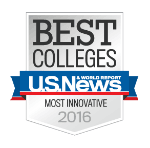Weight of Light Design Brief
Feel free to apply the following Design Brief in your own learning community. Please contact us if you use this brief or a variation in your program, we would love your feedback and potential collaboration.
This brief was designed by the Land Art Generator Initiative in collaboration with the WoL team and participating music educators.
You can also access a version of this brief as a google document.
Description
Culture can be thought of as a reflection of a society’s ability to orchestrate the use of energy beyond that required for the most basic human survival.*
The way that human beings have expressed emotion through sound and music has changed throughout our long history. From simple wind instruments around an open fire to artificial intelligence algorithms wielded by electronic musicians in massive stadiums, our creative musical expression has always reflected the culture and the state of technology of our time.
Today one of the dominant technologies is solar energy and the cultural focus is on the climate crisis. Solar futures, solar punk, and post-carbon eco-techno-utopias have captured the imagination of the optimist. At the same time the coronavirus pandemic has changed the way that we relate to music and performance. Within this framework, what does the act of music composition, performance, distribution, and participation look like in the near future?
The Solar Future you will be contemplating as a group is one that responds to these contemporary cultural issues. What might a solar powered future look and sound like? What solar technology will people use? What are the unique sounds that will emanate from this time and space?
The year is 2045. The previous two decades have brought many challenges as the world transitioned from fossil fuels to renewable and clean forms of energy. As a celebration of the great energy transition your city has put out a call for a new solar powered music experience. Your challenge is to tell the story of how people experience music and art in a 100% solar powered future and how music and art were so important during the years of change (2025–2045).
As you consider your response to the city’s creative call for proposals, consider how life in this new solar future has transformed human culture, the ways we relate to one another, the way we work, our civic participation, art-making, or recreation.
Design Brief
Working either individually or as part of a team you will present your vision of a solar powered future for the year 2045. Your proposal might answer the following questions:
- What is the story you want to tell to the people who will experience your project? Your message or concept can be absolutely anything you can imagine.
- What will the music sound like? What might people express through their music at this venue and beyond? How might the music reflect a solar-powered future?
- What aspects of solar energy are you addressing with your music experience?
- What types of solar technology are involved in your experience?**
- How has solar power impacted people’s lives during 2025-2045?
Your solar technology can either be used to generate electricity to power your music experience, the solar energy can be converted directly into sound energy (explain how this happens), or a combination of both.
- How will artists and audience members interact with your solar energy music experience? How will your project relate to the natural world? Think about where the materials came from that you would use to create your full-scale experience. Does your project disturb the habitat of any animals, birds, or insects? Or does it provide new homes for wild creatures? Put some of these thoughts into your project.
- Who are the necessary partners for your project? For example: local neighbors, community groups, faith based organizations, etc. Keep in mind the importance of diverse voices that are required for a successful and equitable energy transition. Consider how these community partners have contributed to the design of your experience.
You will respond to this challenge with any two of the following (media selection):
- what is your idea…
- original music (audio recording)
(1) MP3 or WAV file no more than 7 minutes in duration - performance (video documentation)
(1) video file (any format) of no more than 4 minutes in duration - written narrative (word document)
(1) DOC file of no more than 2,000 words - Illustration (image file)
(1) page PDF or JPG file poster, portrait, A1 size - sculpture (illustrations and/or 3D tabletop models)
(3) jpg images of table top model or CGI renderings of your sculpture - Engineering design/model/prototype for charging or powering musical instruments/lighting/etc. for concerts
How to submit:
- Attach the two files based on the media you have selected.
- Include process documentation showing your early ideas and sketches. Any file format is acceptable for your process documentation: video, audio, sketches, journal entries, writing notes, collage, materials found in nature, photos of models, activities, or performances.
- Complete weekly Flipgrid reflections across the project.

